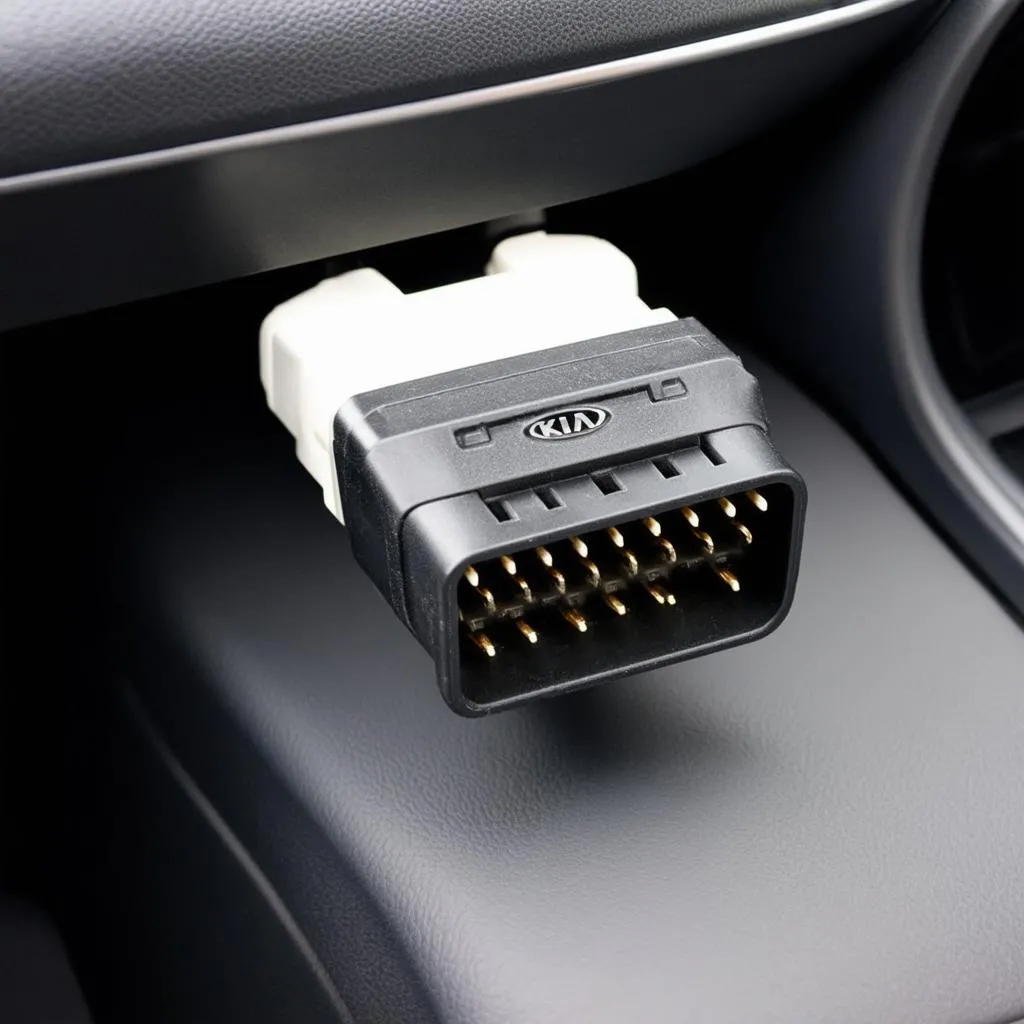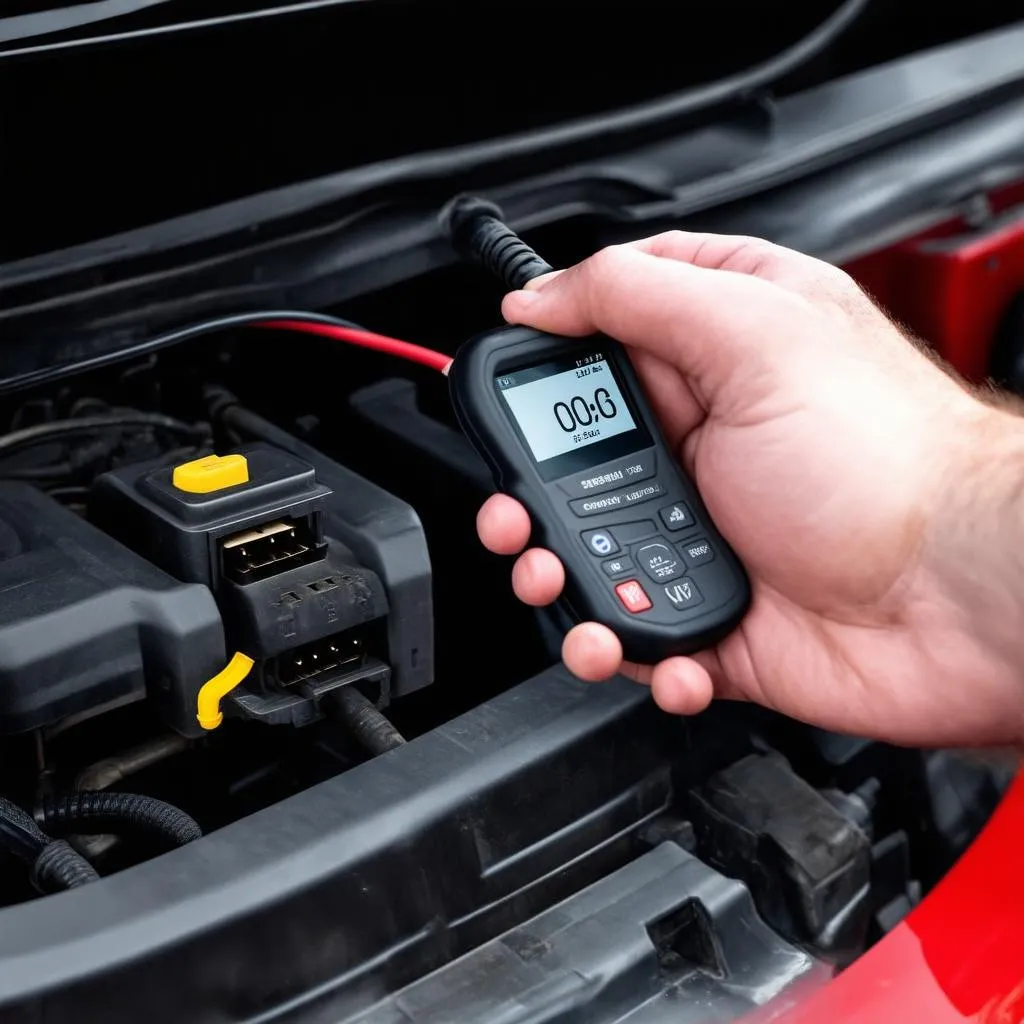“Where’s the darn OBD port on this thing?”
Ever found yourself muttering that under your breath while hunched over the driver’s seat of your Kia? Don’t worry, we’ve all been there. Whether you’re a seasoned mechanic or a DIY enthusiast, knowing the location of your OBD port is crucial for diagnosing and troubleshooting any issues with your car.
Decoding the Mystery: Why is the OBD Port Location So Important?
The OBD port, or On-Board Diagnostics port, is like the Rosetta Stone for your car’s computer. It allows you to communicate with your Kia’s Electronic Control Unit (ECU) – the brains of the operation.
Imagine this: your “check engine” light decides to throw a party on your dashboard. Frustrating, right? This is where your OBD port steps in. By connecting a scan tool (like a Dealer Scanner For European Cars, but for Kias, of course!), you can decipher those cryptic error codes and understand what’s got your car feeling under the weather.
Think of it this way: The OBD port is like a direct line to your car’s inner thoughts, and understanding its location is key to unlocking a treasure trove of information about your vehicle’s health.
Unmasking the Location: Where to Find Your Kia’s OBD Port
In most Kia models, the OBD port is located under the driver’s side dash, somewhere between the steering column and the door. It’s usually a black or white rectangular connector with 16 pins, resembling a trapezoid.
But hold on! Before you go digging around, keep in mind that the exact location can vary slightly depending on the model year and region.
Still can’t find it? No worries! Your trusty owner’s manual will be your best friend in this situation, providing you with a clear diagram and specific instructions tailored to your Kia model.
 Kia Obd Port Location" width="1024" height="1024">Kia OBD Port Location
Kia Obd Port Location" width="1024" height="1024">Kia OBD Port Location
Troubleshooting Time: Common Issues and FAQs about Kia OBD Ports
Q: My OBD scanner isn’t connecting! What gives?
A: First, double-check that your scanner is compatible with Kia vehicles. Then, ensure the ignition is in the “on” position (don’t start the engine!). A blown fuse in the OBD circuit could also be the culprit.
Q: Can I use any OBD scanner on my Kia?
A: While generic OBD-II scanners can read basic engine codes, investing in a Kia-specific scanner, or a professional-grade tool, will unlock a wider range of data and functionality.
Q: I heard something about OBD ports and car theft? Is that true?
A: Unfortunately, there’s a kernel of truth to this. While Kia has implemented security measures, older models could be vulnerable. Consider adding additional security measures like a steering wheel lock for peace of mind.
Beyond the Basics: The OBD Port’s Potential
The OBD port isn’t just for mechanics and gearheads. It’s opened up a world of possibilities for everyday drivers:
- Performance Monitoring: Track your car’s performance metrics like speed, RPM, and fuel efficiency.
- DIY Diagnostics: Diagnose minor issues yourself and potentially save on costly mechanic visits.
- Customization: Some advanced scanners allow you to personalize certain aspects of your Kia’s behavior, such as adjusting automatic door locks.
 Kia OBD Scanner
Kia OBD Scanner
Ready to Dive Deeper into the World of Kia Tech?
Looking for more Kia-specific tips, tricks, and guides? Check out these resources:
- Kia Rio OBD Port Location: https://techcarusa.com/kia-rio-obd-port-location/
- 2023 Kia Sportage OBD Port: https://techcarusa.com/2023-kia-sportage-obd-port/
Need help with your Kia’s diagnostics or have a question about diagnostic tools? Our team of auto repair experts is available 24/7 to assist you. Contact us via WhatsApp at +84767531508 and let us help you get the answers you need.
Remember, knowledge is power when it comes to your car. By understanding your Kia’s OBD port and its capabilities, you’re one step closer to becoming a more informed and confident car owner.